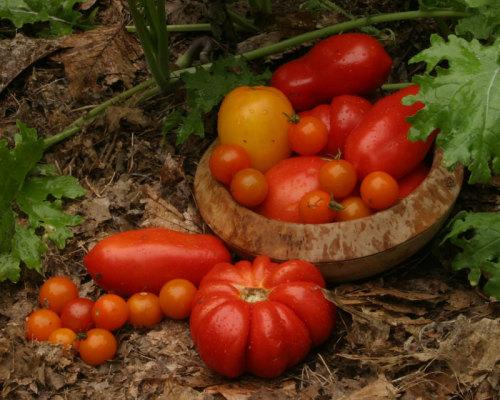February is the perfect time to start growing your vegetable seeds indoors, getting ready for the spring planting season. And among the myriad of veggies you can grow, tomatoes are probably at the top of your list. But have you ever wondered which type of tomato plant is right for you? Let’s take a look at the two main categories: determinate and indeterminate.
Understanding the Difference
Determinate or indeterminate? Tomato plants are typically classified into two groups: determinate and indeterminate. Determinate, also known as bush tomatoes, are bred to reach a specific height, usually around 3 to 4 feet tall. Once they reach their maximum height, flowers blossom at the tips of the branches, indicating that the plant has stopped growing. The fruit of determinate tomatoes ripens all at once, making them perfect for canning. Additionally, their compact size makes them suitable for small-space gardens.
On the other hand, indeterminate tomatoes continue to grow indefinitely. Depending on the variety, they can reach heights ranging from 6 to 20 feet. These plants will keep producing tomatoes throughout the growing season until a hard frost stops them in their tracks. Indeterminate tomatoes are ideal for those who want a continuous harvest of slicing or salad tomatoes. While they are also suitable for canning, it’s worth noting that you may need more indeterminate plants to ensure you have enough tomatoes for canning at any given time.
Supporting Your Tomato Plants
Now that you’ve decided on the type of tomato plant you want to grow, it’s essential to provide them with proper support. Cages and stakes are the easiest and fastest structures for vertical plants like tomatoes or peppers. Although these plants don’t have true vines, their branches still need support to keep them upright.
Caging is an effortless way to support tomato plants, especially determinate varieties. However, for indeterminate plants, staking is generally recommended. Staking tomato plants helps keep them upright and prevents the fruit from touching the ground. You can use materials like scrap wood, bamboo, or metal as stakes.
If you opt for staking, you’ll need a tying material to attach the plants to the stake as they grow. You can use torn fabric, twist-ties, or plastic ties for this purpose. Additionally, pruning indeterminate tomato plants is essential to maximize the benefits of staking.
My Personal Preference
Personally, I tend to grow indeterminate tomatoes more often than their determinate counterparts. However, this is mainly because I prefer heirloom varieties, and most heirlooms are indeterminate plants. The choice ultimately depends on your preference, available space, and desired harvesting style.
In conclusion, whether you choose determinate or indeterminate tomato plants, both have their advantages. Determinate plants are great for canning and limited gardening space, while indeterminate plants provide a continuous harvest. Whichever type you decide to grow, remember to provide the right support to help your tomatoes thrive and produce a bountiful crop. Happy gardening!


